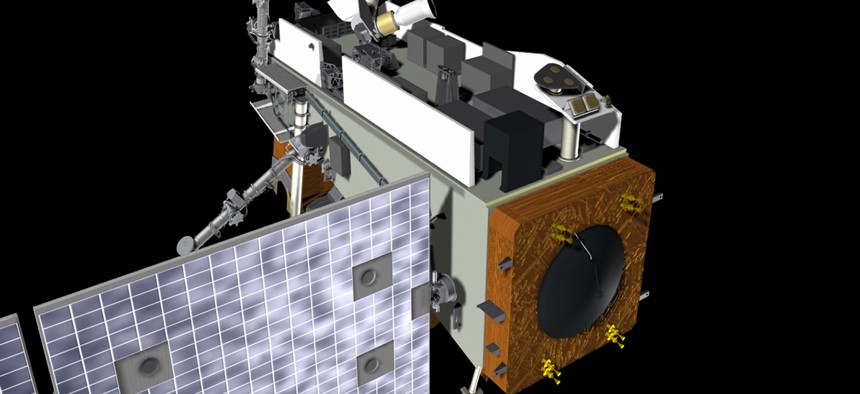$10B Next-Gen NOAA Satellite Launch May Be Delayed… Again

NOAA
NOAA and NASA executives are weighing their options with a decision of whether to delay expected in the coming days.
The launch of a satellite vital to U.S. weather forecasting may again be delayed because of ongoing issues with onboard instrumentation and problems with ground systems.
Those same issues previously delayed the launch of Joint Polar Satellite System, or JPSS-1, until March 2017, and the JPSS program recommended in September National Oceanic and Atmospheric Administration and NASA postpone the launch further.
A NOAA-convened Independent Integration Team has conducted an evaluation of cost, schedule and performance issues of JPSS-1, the first of several satellites in the $10 billion JPSS constellation, and executives from both agencies are weighing their options with a decision of whether to delay expected in the coming days.
» Get the best federal technology news and ideas delivered right to your inbox. Sign up here.
“NOAA and its partner NASA are currently assessing the launch readiness schedule of NOAA's JPSS-1 mission," NOAA spokesperson John Leslie told Nextgov. "A new launch planning date may be known by early November. Meanwhile, both agencies remain committed to preparing JPSS-1, not only for launch readiness but for full mission success.”
A NOAA official familiar with the JPSS program told Nextgov a “delay is likely,” suggesting it was unlikely lingering issues with ground systems and one of the satellite’s primary instruments, the Advanced Technology Microwave Sounder. The ATMS instrument, built by Northrop Grumman, was returned over the summer to the contractor for additional testing and repairs.
Another delay further increases the risk of a gap in weather data vital to U.S. weather forecast, which could significantly impact their accuracy. The Government Accountability Office took the unusual step of adding NOAA’s environmental satellite programs on its biennial High-Risk List in 2013, and recently Congress has become increasingly concerned, pushing NOAA to pursue commercial satellite operations where available.
At the moment, a demonstration satellite called Suomi NPP—a satellite nearing the end of its life expectancy—continues to beam down data to NOAA ground stations. A gap in weather data from polar-orbiting satellites would occur if the satellite should fail before JPSS-1 is operational. According to NOAA, the earliest JPSS-1 could become operational is six months after it launches.
After a series of its own delays, the first of NOAA’s other large-scale environmental satellite constellation, the Geostationary Operational Environmental Satellite, or GOES-R, had been cleared to launch October but was delayed because of Hurricane Matthew. A new launch range date of Nov. 16 has been requested.
Combined, JPSS-1 and GOES-R will produce nearly 10 terabytes of weather data per day and are expected to dramatically increase the accuracy of U.S. weather forecasts.



